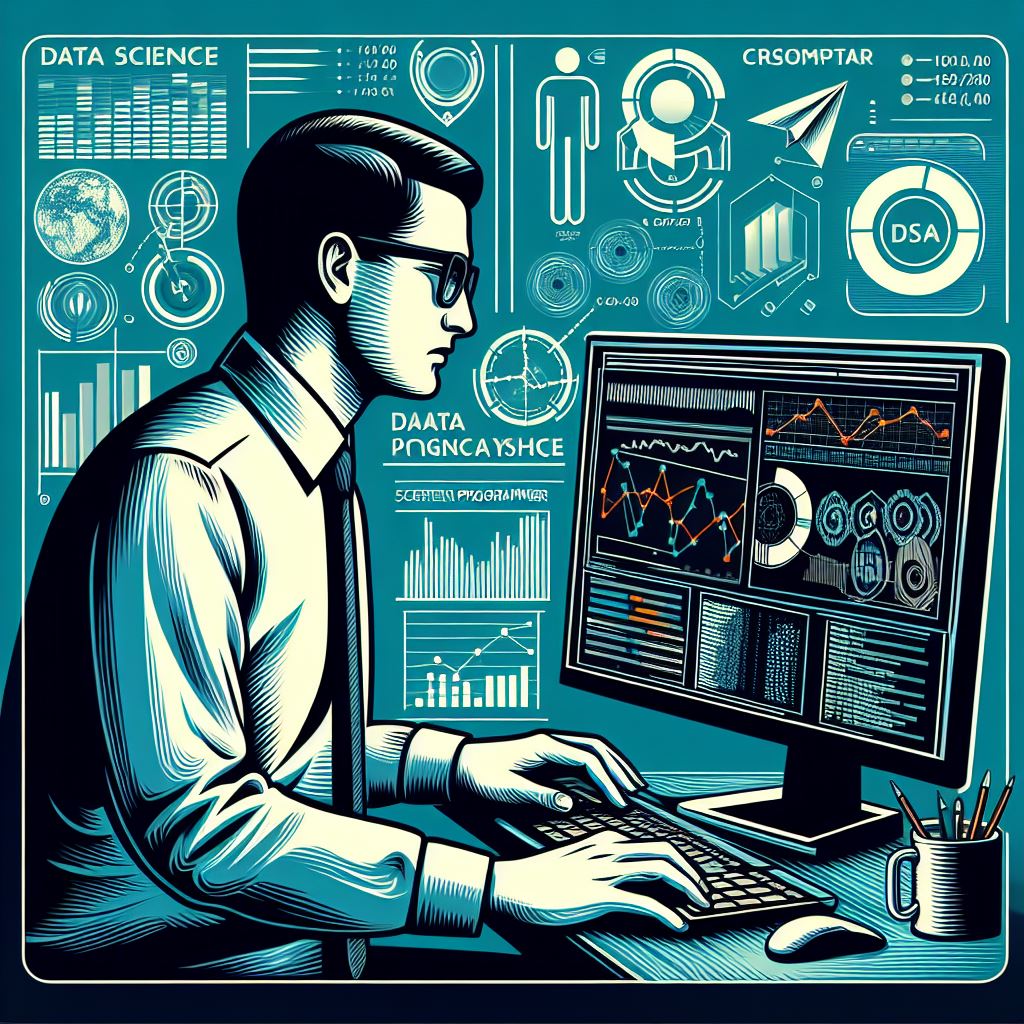In today’s data-driven world, businesses and organizations are increasingly leveraging data science to make informed decisions. However, raw data alone can be overwhelming and difficult to interpret. This is where data visualization plays a crucial role in transforming complex data into clear, actionable insights. By using visual representation techniques, data scientists can create charts, graphs, and interactive dashboards that help decision-makers quickly understand trends, patterns, and anomalies.
Data visualization is more than just creating pretty pictures—it is about presenting data in a way that enables stakeholders to make informed choices efficiently. Whether it’s predicting customer behavior, optimizing operations, or understanding market trends, data visualization allows professionals to communicate insights in a compelling and understandable manner.
Why is Data Visualization Important in Data Science?
Data visualization simplifies complex data by turning numbers and statistics into visuals, which are easier to interpret and analyze. A well-designed chart or graph not only captures attention but also helps users uncover insights that might otherwise remain hidden in raw datasets. For example, a line chart illustrating sales trends over time can immediately show spikes, drops, and seasonality in sales performance. In contrast, examining a spreadsheet filled with numbers could make it difficult to identify these trends.
Moreover, data visualization enhances the storytelling aspect of data science. Visuals allow data scientists to present findings in a narrative format, guiding the audience through the insights in a way that is intuitive and engaging. This makes it easier for non-technical stakeholders to understand the implications of data without getting lost in the complexity of algorithms or formulas.
Key Types of Data Visualizations
There are many types of visualizations that can be used depending on the type of data and the message you wish to convey. Here are some of the most popular:
Bar Charts and Histograms – Ideal for comparing quantities across different categories. For instance, bar charts are often used to display the sales performance of various products, while histograms show the distribution of data within a set range.
Line Graphs – Perfect for illustrating trends over time. These are commonly used in time series analysis, such as tracking website traffic or stock market performance.
Pie Charts – Effective for showing proportions or percentages of a whole. Pie charts are frequently used to display market share or demographic breakdowns.
Scatter Plots – Useful for understanding the relationship between two variables. Scatter plots can highlight correlations, such as the relationship between advertising spend and sales revenue.
Heatmaps – Provide an intuitive representation of data density, such as user activity on a website or geographical patterns of sales. These are useful for identifying areas of high concentration or potential opportunities.
Tools and Techniques for Data Visualization
Several tools and libraries are available to help data scientists create compelling visualizations. Python, one of the most popular programming languages for data science, offers powerful libraries such as Matplotlib, Seaborn, and Plotly. These libraries provide a wide range of customizable charts and graphs, from simple plots to interactive dashboards.
Another widely used tool is Tableau, a leading data visualization software that allows users to create interactive and shareable dashboards. Tableau’s drag-and-drop interface makes it easy for non-technical users to explore data and generate insights.
Moreover, Power BI by Microsoft is another excellent tool for creating business-oriented visualizations, especially for users already familiar with the Microsoft ecosystem.
Best Practices in Data Visualization
When creating visualizations, it’s essential to follow certain best practices to ensure clarity and effectiveness:
Choose the right chart type: Not all charts are suitable for every dataset. It’s important to select the visualization that best represents the data you are working with.
Simplify your visuals: Avoid cluttering your visualizations with unnecessary elements. Focus on the most important data points to deliver a clear message.
Use color wisely: Colors should be used purposefully to highlight important aspects of the data, but avoid overwhelming the viewer with too many colors.
Label clearly: Ensure that all axes, categories, and legends are clearly labeled to avoid confusion.
Conclusion
Data science visualization is a powerful tool for unlocking insights from complex datasets. By converting data into visuals, data scientists can make it easier for decision-makers to understand patterns, trends, and anomalies. With the right tools and techniques, data visualization not only aids in data interpretation but also enhances communication and storytelling. Whether you’re working with small datasets or big data, mastering the art of visualization is an essential skill for any data scientist.
5
